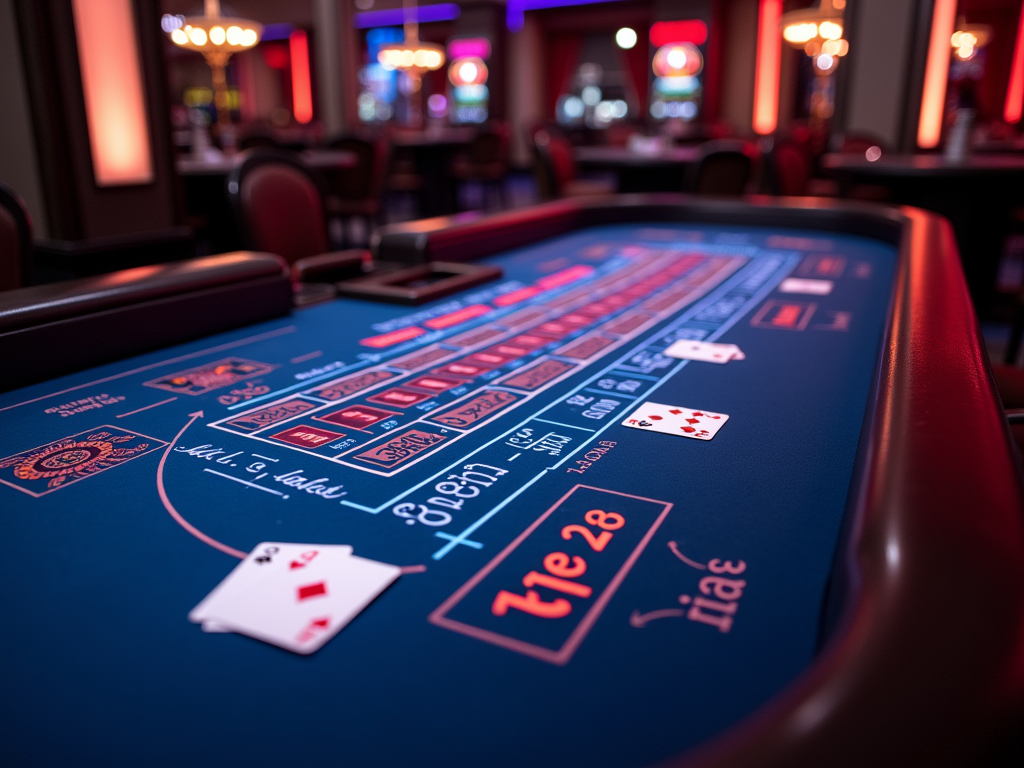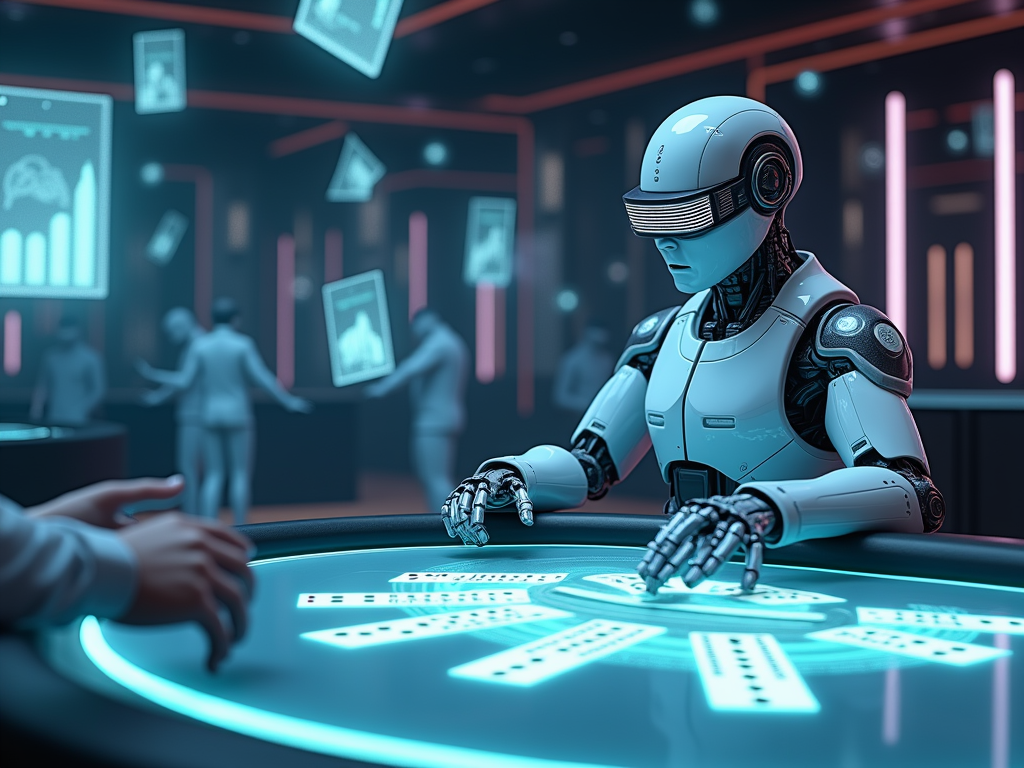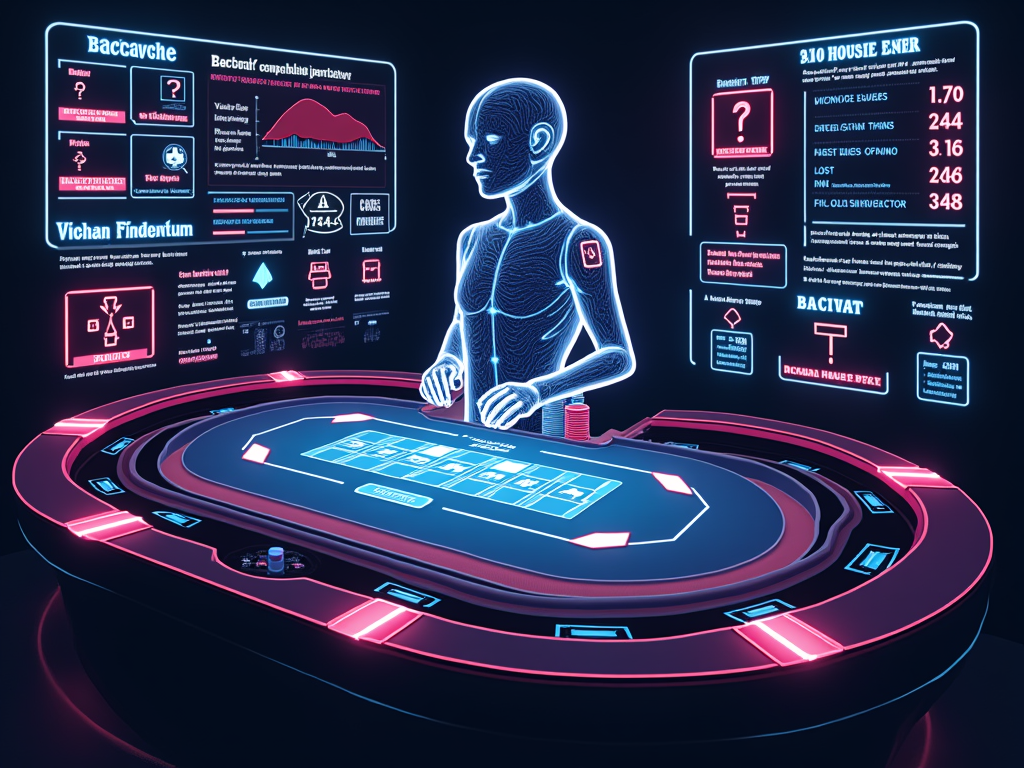AI vs Baccarat: Why Artificial Intelligence Can’t Crack the Code
Recent advances in artificial intelligence have mastered strategic games like chess and Go, but baccarat stands firm against AI prediction attempts because of its random core mechanics. The use of constant shuffling machines and independent card draws results in true randomness that defeats even the most advanced machine learning systems.
Key Takeaways
- The house edge in baccarat (1.06% for Banker bets, 1.24% for Player bets) cannot be overcome through AI or pattern recognition.
- Continuous Shuffling Machines (CSMs) ensure complete randomness by eliminating any possibility of card tracking.
- AI has excelled in games requiring skill and strategy but fails with pure chance-based games like baccarat.
- Machine learning systems often mistake random coincidences for meaningful patterns, leading to unsuccessful prediction attempts.
- AI’s true value in baccarat lies in bankroll management and responsible gaming monitoring rather than in developing winning strategies.
The Mathematics of Baccarat Defeats AI
The mathematical principles behind baccarat create insurmountable barriers for AI systems attempting to predict outcomes. Each hand is statistically independent of the last, which makes pattern recognition impossible. Modern casinos enhance this randomness further by using continuous shuffling machines that mix cards after every hand, erasing any trackable sequences or trends.
The Limitations of Machine Learning in Baccarat
While AI excels in games with strategic depth—such as poker, chess, and Go—it falters when dealing with pure chance. Machine learning algorithms attempt to identify patterns in baccarat data but encounter only random distributions. These false positives—random coincidences mistaken for trends—lead AI models nowhere in terms of effective prediction.
AI’s Role in Baccarat: Player Safety and Management
Although AI cannot predict baccarat outcomes, it still plays a vital supporting role. Its real application comes in player protection rather than gameplay enhancement. Smart AI systems can analyze betting behavior to detect problem gambling and encourage responsible gaming. Additionally, AI tools assist players in optimizing bankroll management to ensure sustained and safer gaming sessions.
These implementations acknowledge the game’s inherent randomness while enhancing the overall gaming environment for players and operators alike.
The Mathematics Behind Baccarat’s Unbeatable Edge
Baccarat’s mathematical structure creates one of the lowest house edges in casino gaming, making it an attractive option for players seeking better odds. The house edge sits at 1.06% for Banker bets and 1.24% for Player bets, while Tie bets carry a steep 14.36% advantage for the casino.
Breaking Down the Numbers
The fixed rules in baccarat eliminate player decision-making after placing a bet, which helps maintain consistent odds. Here’s how baccarat’s house edge compares to other popular casino games:
- American Roulette carries a 5.26% house edge
- Slot machines typically range from 3% to over 10%
- Banker bet in baccarat at 1.06% is notably lower
- Player bet at 1.24% remains competitive
- Tie bet at 14.36% should be avoided due to poor odds
The mathematical certainty in baccarat stems from its rigid card-drawing rules. Once bets are placed, the outcome follows a predetermined path—cards are dealt according to fixed guidelines that dictate when the Player or Banker must draw a third card. This system creates a game where probability calculations remain stable and predictable.
The house edge represents the casino’s built-in advantage, calculated as the percentage of each bet that the casino expects to keep over time. In baccarat’s case, the low house edge on Banker and Player bets means you’ll lose less money over time compared to most other casino games. For example, with a 1.06% house edge on Banker bets, you can expect to lose about $1.06 for every $100 wagered over the long run.
Card values and hand totals follow strict mathematical rules — cards 2–9 are worth their face value, 10s and face cards count as zero, and aces count as one. The final hand total uses only the rightmost digit of the sum, creating a maximum possible value of nine. This system creates a finite number of possible outcomes, all governed by pure mathematics rather than skill or strategy.

How AI Conquered Complex Games (But Not Baccarat)
The history of artificial intelligence’s triumph in strategic games reads like a highlight reel of computational achievements. I’ve tracked AI’s remarkable progression from mastering simple board games to conquering some of humanity’s most challenging mental contests.
Landmark AI Victories in Strategic Games
1997 marked a turning point when IBM’s Deep Blue defeated world chess champion Garry Kasparov. This victory showed that computers could out-calculate human experts in games with clear rules and finite possibilities. But this was just the beginning.
The real breakthrough came in 2016 when DeepMind’s AlphaGo faced off against Lee Sedol in the ancient game of Go. Many experts thought Go’s vast number of possible moves would keep it beyond AI’s reach. They were wrong. AlphaGo’s victory proved that modern AI could handle strategic complexity at an unprecedented scale.
The next frontier was games with incomplete information. Between 2017 and 2019, Carnegie Mellon’s AI systems shattered these barriers too. Here’s how these poker-playing AIs changed the game:
- Libratus defeated top human players in heads-up no-limit Texas Hold’em
- Pluribus mastered six-player poker, handling multiple opponents simultaneously
- Both systems learned to bluff and read opponents’ patterns effectively
These achievements highlight a crucial point: AI excels in games requiring skill, strategy, and even psychological elements like bluffing. The machines combine raw computational power with sophisticated deep neural networks to create strategies that surpass human capabilities.
But there’s a catch. While AI dominates games of skill and strategy, it hits a wall with pure chance-based games like baccarat. No amount of computational power or strategic analysis can predict the next card when each draw is completely random. This limitation shows that while AI can master complex decision-making, it can’t overcome the fundamental nature of probability.
The contrast between AI’s success in strategic games and its powerlessness in games of pure chance perfectly illustrates both the potential and limitations of machine learning in gaming applications.
Why Machine Learning Can’t Crack Baccarat’s Code
The Reality of Random Events
I need to be clear: machine learning can’t beat Baccarat because each hand dealt is completely independent of every other hand. Think of it like flipping a coin – getting heads five times in a row doesn’t make tails any more likely on the next flip. This fundamental principle of probability is what makes Baccarat resistant to AI prediction attempts.
Continuous Shuffling Machines (CSMs) create an additional layer of randomness that makes pattern recognition impossible. These machines constantly mix the cards after each hand, effectively creating a fresh deck every time. This eliminates any possibility of tracking card sequences or maintaining a reliable count.
Key Barriers for AI
Let me break down the key barriers that prevent AI from gaining an advantage:
- Each hand is an independent event with no connection to previous outcomes
- CSMs create constant random shuffling that prevents card tracking
- The house edge remains constant regardless of previous results
- Player decisions are limited and can’t influence the mathematical odds
- No amount of data analysis can predict truly random events
Unlike games such as Blackjack where skilled players can gain an edge through card counting, Baccarat offers no such opportunity. The cards from previous hands provide zero useful information about future outcomes. Many players fall into the trap of the Gambler’s Fallacy – believing they can spot patterns in what’s actually random chance.
No Strategic Optimization
What’s particularly striking about Baccarat is its resistance to strategic optimization. There’s no decision-making process to improve through machine learning because player choices are strictly limited by the game’s rules. An AI can’t learn to make better decisions when there aren’t any meaningful decisions to make in the first place.
When someone claims they’ve developed an AI system that can beat Baccarat, they’re misunderstanding either the nature of the game or the capabilities of machine learning. While AI excels at finding patterns and optimizing decisions, it can’t create patterns where none exist or optimize choices that aren’t available.

Failed Attempts: AI’s Misadventures in Baccarat
I’ve seen countless attempts to crack baccarat’s code using artificial intelligence, but the results consistently prove disappointing. Advanced machine learning systems like Recurrent Neural Networks (RNNs) and Long Short-Term Memory (LSTM) networks have fallen short in their mission to predict winning patterns, struggling against the game’s inherent randomness.
Why AI Systems Keep Missing the Mark
The fundamental problem lies in how these AI systems process baccarat’s random outcomes. They’re excellent at finding patterns – but in baccarat, those patterns are purely coincidental. The AI ends up “overfitting” – a technical term that means it’s basically memorizing noise instead of discovering useful signals.
Here’s what typically goes wrong when applying AI to baccarat:
- RNNs fail to identify meaningful sequence patterns despite analyzing millions of hands
- LSTM networks, despite their sophisticated memory capabilities, can’t predict future outcomes better than chance
- Predictive algorithms mistake random streaks for actionable patterns
- Machine learning models struggle with the impact of table limits and bankroll constraints
Popular betting systems have also been put through their paces by AI simulations, but they’ve all come up short. These include:
- The Martingale system, which doubles bets after losses
- The Fibonacci sequence, which follows a mathematical progression
- The D’Alembert method, which uses gradual bet increases
While these systems might seem promising by extending playing time, they can’t overcome the built-in house edge. In fact, when combined with real-world factors like table limits and finite bankrolls, these strategies often speed up losses rather than prevent them.
I’ve analyzed countless simulations that test these betting systems under various conditions, and the outcome is always the same: consistent financial loss over time. The AI’s attempts to predict patterns or optimize betting strategies ultimately prove futile against the game’s random nature and the casino’s mathematical advantage.
Where AI Actually Helps in Baccarat
Smart Money Management and Risk Analysis
I’ve found that AI’s greatest contribution to baccarat isn’t about beating the house edge – it’s about protecting your bankroll and making smarter betting decisions. AI-powered systems excel at implementing strict bankroll management rules, like the conservative 1% per hand approach, which helps maintain consistent play despite variance.
Here’s how AI makes a real difference in baccarat strategy:
- Bankroll Protection: AI systems can automatically calculate optimal bet sizes based on your total bankroll, preventing emotional decisions that often lead to oversized wagers.
- Pattern Detection: While past results don’t predict future outcomes, AI can identify when you’re deviating from your predetermined strategy.
- Risk Assessment: Advanced algorithms continuously monitor your win/loss patterns and adjust betting recommendations to stay within your risk tolerance.
- Loss Limit Enforcement: AI tools can automatically restrict betting when you reach your predetermined loss limits, removing emotion from the equation.
The real power of AI shows up in its ability to run complex Monte Carlo simulations. These simulations process millions of hands in seconds, giving players a clearer picture of probability distributions and potential outcomes. This data helps create more realistic expectations about winning and losing streaks.
For online baccarat specifically, AI serves as a valuable watchdog. It can spot irregularities in Random Number Generators (RNGs), helping ensure fair play. This adds an extra layer of security for players who prefer digital versions of the game.
AI’s role in responsible gaming shouldn’t be overlooked either. Modern AI systems can track betting patterns and identify signs of problem gambling before they become severe. The technology spots red flags like dramatic increases in bet sizes or extended playing sessions, stepping in with alerts or temporary restrictions to promote healthier gaming habits.
The most effective use of AI in baccarat isn’t about finding a magical winning formula – it’s about creating a structured, disciplined approach to the game that protects your bankroll while maximizing enjoyment. By removing emotional decision-making from the equation, AI helps players stick to their strategies and avoid common pitfalls that lead to significant losses.
Sources:
Stanford University – CS229 Project Report
Google DeepMind – Mastering the game of Go with deep neural networks and tree search
Carnegie Mellon University – News Release on Libratus AI Poker victory
Wizard of Odds – Baccarat – Game Rules and Analysis Pages
Investopedia – House Edge Definition
Towards Data Science – Why Machine Learning Won’t Help You Win the Lottery (or Baccarat)
IBM Research – Archives on Deep Blue vs. Kasparov





